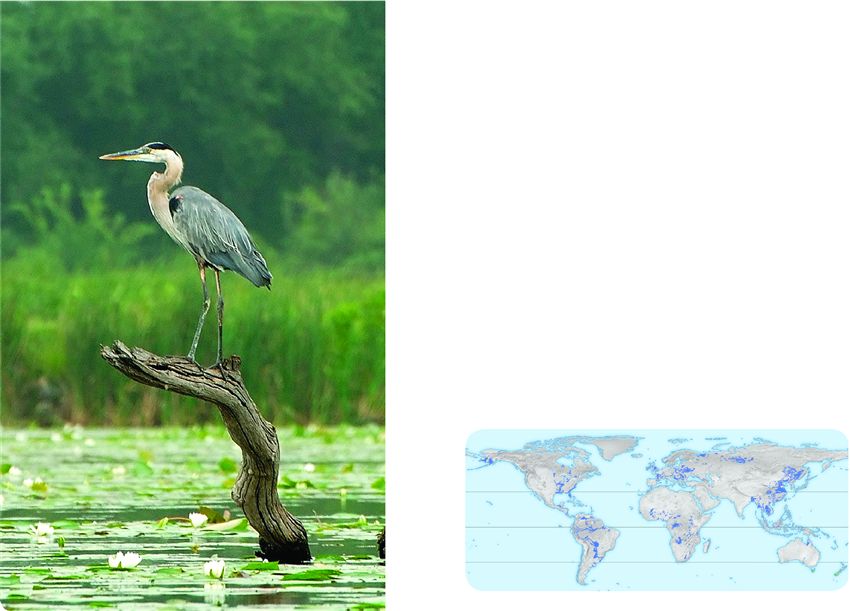 |
| Previous Image | Next Image |
| Description: Physical Environment: At the margins of both lentic and lotic habitats, wetlands may develop. Wetlands are areas regularly saturated by surface water or groundwater. They can range from marshes and swamps to bogs. Many are seasonally flooded when rivers overflow their banks or lake levels rise. Some wetlands also develop along estuaries, where rivers merge with the ocean and high tides can flood the land. Here, salt marshes or, in tropical areas, stands of mangroves can develop. Because of generally high nutrient levels, oxygen levels are fairly low. Temperatures vary substantially with location. Prairie potholes are also a type of wetland. Location: Worldwide, except in Antarctica. Plant Life: Wetlands are among the most productive and species-rich areas in the world. In North America, floating plants such as lilies and rooted species such as sedges, cattails, cypress, and gum trees predominate. Animal Life: Most wetlands are rich in animal species. Wetlands are a prime habitat for wading and diving birds. In addition, they are home to a profusion of insects, from mosquitoes to dragonflies. Vertebrate predators include many amphibians, reptiles, and mammals such as otters. Effects of Humans: Long mistakenly regarded as wasteland by humans, many wetlands have been drained and developed for subdivisions and industry.
Picture Stats: Views: 981 Filesize: 63.41kB Height: 611 Width: 850 Source: https://biology-forums.com/index.php?action=gallery;sa=view;id=1356 |
